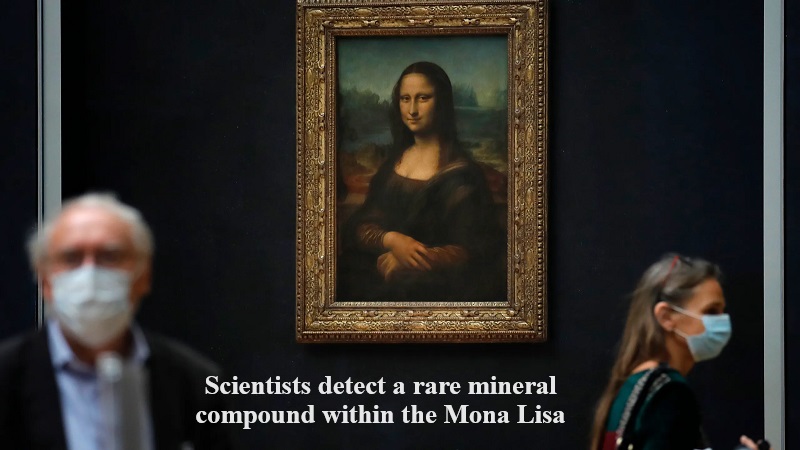
A team of scientists from France and Britain has successfully identified a rare mineral compound within Leonardo da Vinci’s iconic painting, the Mona Lisa.
As detailed in a recent publication in the Journal of the American Chemical Society, this groundbreaking discovery sheds light on Leonardo da Vinci’s innovative techniques in creating the Mona Lisa, offering a deeper understanding of the painting’s intricacies from the 16th century.
The analysis, utilizing X-ray diffraction, has unearthed the composition of the base layer of paint in the Mona Lisa, which is found to be a compound named plumbonacrite, consisting of lead white pigment and oil.
A study in 2019 revealed that Rembrandt also employed the same mineral compound in his paintings during the 17th century. However, until this latest analysis, researchers had not identified plumbonacrite in artworks from the Italian Renaissance period.
Plumbonacrite, which is formed by combining lead oxides with oil, served to expedite the drying process of the paint. The presence of this compound in the Mona Lisa suggests that Leonardo da Vinci may have been the pioneering artist in using this technique.
Gilles Wallez, the author of the latest study on the Mona Lisa, emphasized the significance of Leonardo’s multifaceted talents and innovation. He described Leonardo as not only an artist but also a chemist, physicist, and experimenter, constantly seeking to advance the knowledge of his era. Wallez believes that every time something new is uncovered about Leonardo’s techniques, it becomes evident that he was far ahead of his time.

Post Your Comments